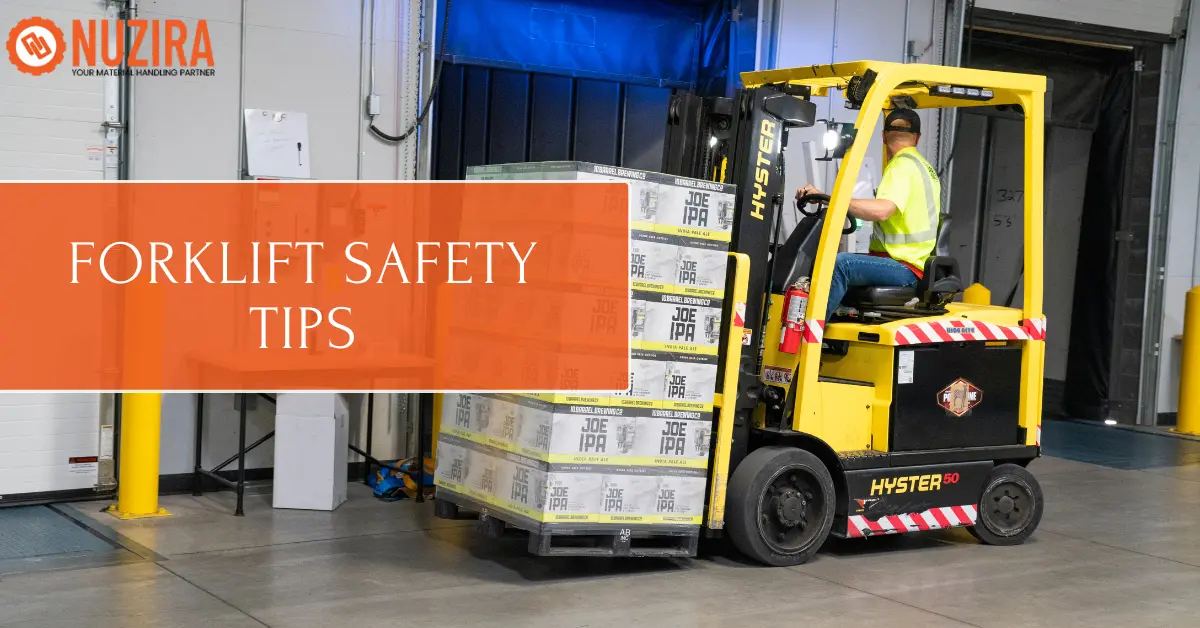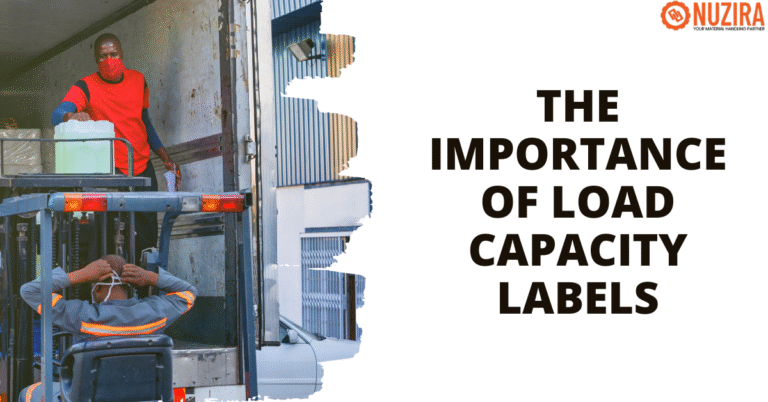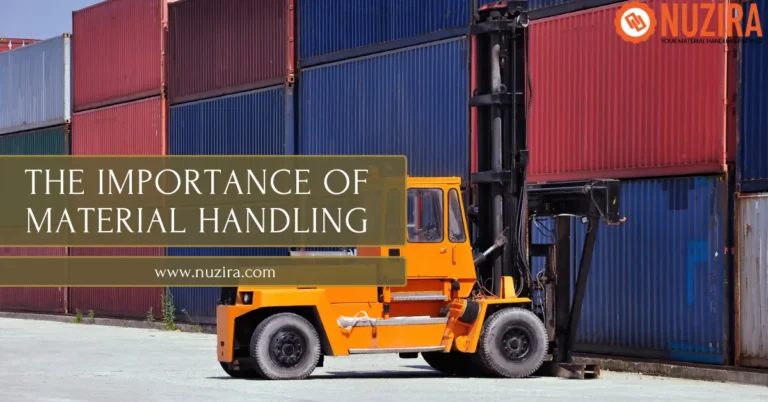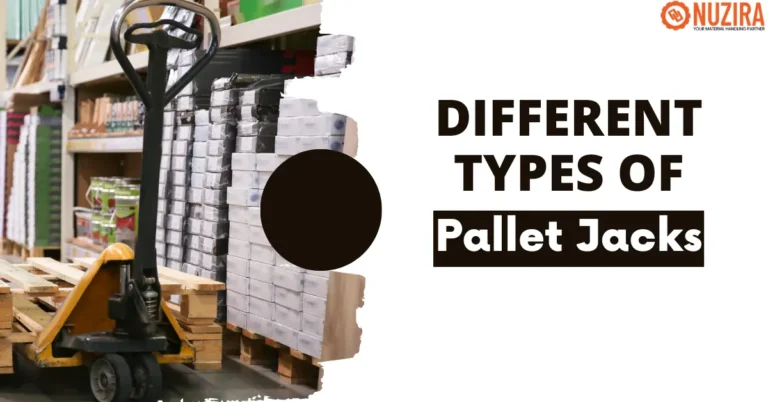Forklift Safety Tips: Essential Practices Every Operator Should Know
Operating a forklift comes with great responsibility. These machines are powerful, and while they make material handling easier, they also present serious risks if used improperly. Whether you’re new to forklift operation or have years of experience, prioritizing safety is non-negotiable. This guide explores practical forklift safety tips to help protect operators, coworkers, and workplace environments.
Why Forklift Safety Matters
Forklifts are everywhere—warehouses, construction sites, shipping yards. They lift heavy loads fast. They save time. They keep business moving. But here’s the catch: the same power that makes them useful also makes them dangerous.
Each year, thousands of accidents happen. Some small. Some serious. Some fatal. OSHA tracks them all. The cost? Injuries, damaged goods, downtime, lawsuits. It adds up fast.
Safety isn’t just a rule. It’s protection. It keeps workers safe. It keeps equipment running. It keeps businesses alive. One wrong move can mean tipped loads, broken racks, or worse—injuries that stop work for weeks. On the flip side, trained teams run smoother. They move faster. They trust each other. They get more done.
New to forklifts? Start with certification. It’s not just paperwork. It teaches skills, awareness, and focus. Operators learn how to handle machines, watch for people, and avoid hazards. Certification builds habits that last. And those habits save lives.
Bottom line: forklift safety pays off. Fewer accidents. Lower costs. Higher productivity. A workplace that values safety values people. And when people feel protected, everyone wins.
Pre-Operation Safety Checks
Before starting the forklift, stop. Take a few minutes for checks. This isn’t just routine—it’s protection. Protection against breakdowns, costly delays, and injuries. A forklift may look fine at first glance, but small issues hide underneath. If ignored, they can grow into big problems. That’s why a pre-shift inspection matters.
Visual check: Walk around. Look closely. Any leaks on the floor? Tires worn down or soft? Missing bolts, bent rails, cracks in the mast? Even tiny flaws today can stop work tomorrow.
Controls: Sit in the seat and test. Brakes—firm or spongy? Steering—smooth or stiff? Accelerator—responsive? Horn and lights—clear? Don’t skip the hydraulics. Jerky or weak levers may point to air in the system or low fluid.
Forks and attachments: Check for cracks. Look for bends. Are the forks even? Locking pins in place? Retaining clips secured? Small deformities can mean danger under load.
These steps take minutes. They prevent hours of downtime. More importantly, they build a culture—one where safety is not just a rule, but a habit. Operators protect themselves, their team, and the company’s investment.
Understanding the Work Environment
Every worksite is different. Each has risks you can’t see right away. Good operators slow down, observe, and think. They don’t just “look around.” They read the space. They anticipate what might go wrong.
Floors: Watch for uneven ground. Loose debris. Spills. Cracks. Any of these can make a loaded forklift unstable. Spot hazards early and adjust—slower speed, sharper focus, or a new route.
Traffic: People and machines move together in tight spaces. Pedestrians crossing. Trucks unloading. Other forklifts weaving in. Build a mental map. Drive defensively. Signal clearly. Stay predictable.
Storage setup: Racks too tall? Aisles too narrow? Loading zones tight? Awareness here prevents clipped racks, spilled loads, and wasted time from constant repositioning.
And remember—conditions change all day. Deliveries arrive. Pallets shift. Spills happen. Staying alert isn’t a one-time thing. It’s ongoing. The operator who stays sharp works safer, faster, and smarter.
Safe Load Handling and Driving Practices
Once a forklift is in motion, the operator becomes responsible not only for their safety but also for the security of the load and those nearby. Practicing proper load handling and responsible driving significantly reduces risks.
Proper Load Handling Techniques
Handling loads looks simple. But one mistake can cause accidents, damage, or injuries.
A cracked pallet, an uneven stack, or a load that’s too heavy can throw everything off. That’s why safe handling isn’t optional—it’s a must.
- Check stability. Look before you lift. Leaning boxes? Loose straps? Broken pallets? A steady load means a safer move.
- Know your machine. Every forklift has a weight limit. Go past it, and the forklift can tip. Always check the load plate.
- Lift carefully. Get the forks fully under the load. Tilt back slightly, but not too much. Lift only as high as you need—higher means riskier.
- Move smoothly. No sharp turns. No sudden stops. No jerky starts. Smooth moves keep the load steady and you safe.
Master these basics, and you’ll not only avoid damage—you’ll move with more confidence on the floor. For a deeper dive into strategies that maximize both safety and efficiency, explore this guide on forklift best practices.
Responsible Driving Habits
Driving a forklift isn’t like driving a car. It’s heavier, riskier, and the space is tighter. You’ve got shelves, people, and blind spots all around you.
- Control speed. Even a small burst of speed can cause big damage. Slow down.
- Keep your view clear. Can’t see ahead? Drive in reverse. Use mirrors. Use spotters. Never guess.
- Signals often. A horn tap before a corner can prevent a crash. Simple, quick, life-saving.
- Leave space. Stay back from others. Heavy loads take longer to stop.
The best operators aren’t the fastest—they’re the ones who can spot danger early and react before it’s too late.
Working Safely Around Pedestrians
Forklifts and people don’t mix well. Workers on foot don’t always see the risks, and drivers don’t always see the workers. Staying safe means staying alert.
- Pedestrians first. Always yield. Even if the path looks clear, stop if someone is near.
- Stay in lanes. Use forklift-only routes whenever possible. They’re built for safety.
- Ban risky behavior. No walking under forks. No riders on the machine unless it’s designed for it.
In the end, it comes down to awareness. A quick hand signal. A nod. Eye contact. Small actions that prevent big accidents. Safety grows when drivers and pedestrians respect each other’s space.
Maintenance, Training, and Choosing the Right Forklift
Safety isn’t just about how a forklift is driven—it also depends on ongoing care, operator knowledge, and selecting the right equipment for the job.
The Role of Regular Maintenance
A forklift is only as good as its condition. If it’s not maintained, it’s not safe. Simple. Breakdowns happen. Brakes fail. Tires wear down. And when they do, accidents follow. Lives and productivity hang in the balance. That’s why maintenance isn’t optional—it’s essential.
- Routine servicing: Follow the schedule. Use the manufacturer’s guide. Keep inspection logs. Spot problems early.
- Immediate repairs: Don’t wait. A leak. A warning light. A small noise. Tiny issues become big failures fast.
- Clean workspaces: Dirt, oil, and clutter aren’t harmless. They slow machines, cause slips, and add risk.
Treat maintenance as safety. Not as a chore. A well-kept forklift runs longer, costs less, and keeps people safe.
Ongoing Training and Certification
Training isn’t a one-and-done deal. Safety rules change. Forklift designs evolve. Hazards differ from site to site. Without refreshers, operators grow careless. And careless means dangerous.
Refresher courses and skill checks? They’re not extras. They’re shields. They protect workers from bad habits and outdated knowledge.
Employers must insist: only certified operators drive forklifts. It’s the law, yes. But more than that—it builds trust. It sets a tone of responsibility. Workers feel sharper, safer, and respected.
Choosing the Right Forklift
Jobs aren’t the same. Forklifts aren’t the same. Match them wisely. Get it wrong, and danger follows.
Picture this: an electric pallet jack in a warehouse? Perfect. Take that same jack outdoors on rough ground? Disaster. A rough-terrain forklift indoors? Overkill. Unsafe. Wrong tool, wrong job.
So, choose with care. Look at load weight. Space. Terrain. Maneuverability. Unsure? Check reliable resources before buying. The right forklift prevents delays, avoids accidents, and saves money. If you’re unsure which type fits your needs, explore this resource on different types of forklifts to make informed decisions.
Conclusion
Forklift safety is a shared responsibility that combines operator awareness, proper training, careful driving, regular maintenance, and selecting the right equipment. By following these forklift safety tips, businesses can reduce accidents, protect employees, and create a more productive work environment.
At the end of the day, safety is about consistency. Every inspection, every cautious maneuver, and every refresher course builds toward a safer workplace for all.
If you’re ready to strengthen your material handling knowledge and find solutions tailored to your needs, be sure to visit our website for more insights and resources.







